Themed collection Immunological Biomaterials

Themed collection on immunological biomaterials: where materials meet the immune system in health and diseases
Guest editor Krishnendu Roy introduces this Journal of Materials Chemistry B themed collection on immunological biomaterials.

J. Mater. Chem. B, 2016,4, 1567-1568
https://doi.org/10.1039/C6TB90021F
Materials design at the interface of nanoparticles and innate immunity
Engineered nanoparticle platforms have been developed intensely in recent years, yielding significantly broadened applications from interrogating novel biology to new therapies. Using these platforms requires improved understanding of design rules to improve our ability to control nanoparticle-immune system interactions.
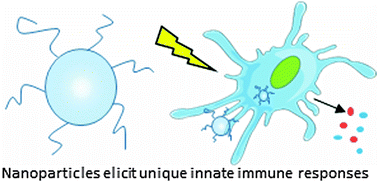
J. Mater. Chem. B, 2016,4, 1610-1618
https://doi.org/10.1039/C5TB01825K
Tailoring biomaterial surface properties to modulate host-implant interactions: implication in cardiovascular and bone therapy
Host body response to a foreign medical device plays a critical role in defining its fate post implantation.
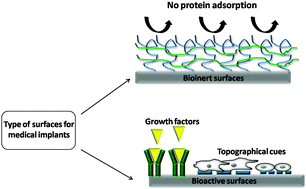
J. Mater. Chem. B, 2016,4, 1586-1599
https://doi.org/10.1039/C5TB01686J
Glycomaterials for immunomodulation, immunotherapy, and infection prophylaxis
Synthetic carbohydrate-modified materials that can engage the innate and adaptive immune systems are receiving increasing interest to confer protection against onset of future disease, such as pathogen infection, as well as to treat established diseases, such as autoimmunity and cancer.
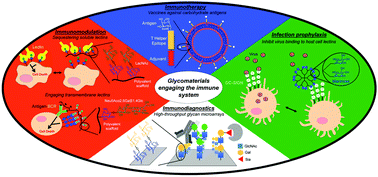
J. Mater. Chem. B, 2016,4, 1569-1585
https://doi.org/10.1039/C5TB01780G
Strategies for modulating innate immune activation and protein production of in vitro transcribed mRNAs
This review discusses the challenges associated with IVT mRNA therapeutics and vaccines as well as the current strategies employed to overcome these challenges.
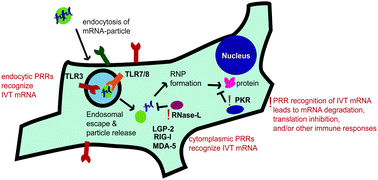
J. Mater. Chem. B, 2016,4, 1619-1632
https://doi.org/10.1039/C5TB01753J
Biomolecular strategies to modulate the macrophage response to implanted materials
Materials engineered to display immunomodulatory molecules including adhesion ligands, cytokines, and self-proteins, target receptors on immune cells to modulate their response to biomaterial implants.

J. Mater. Chem. B, 2016,4, 1600-1609
https://doi.org/10.1039/C5TB01605C
Self-assembled hybrid supraparticles that proteolytically degrade tumor necrosis factor-α
The strategies of pathogens to evade the human immune system are highly sophisticated and modulate a variety of inflammatory pathways.
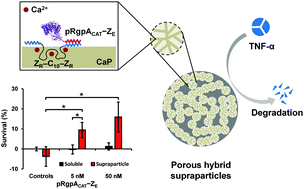
J. Mater. Chem. B, 2016,4, 1633-1639
https://doi.org/10.1039/C5TB01647A
Peptide nanofiber–CaCO3 composite microparticles as adjuvant-free oral vaccine delivery vehicles
To combat mucosal pathogens that cause gastrointestinal (GI) infections, local mucosal immunity is required which is best achieved through oral vaccination.
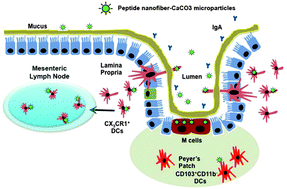
J. Mater. Chem. B, 2016,4, 1640-1649
https://doi.org/10.1039/C5TB01623A
The effect of PEGylation on the stimulation of IL-1β by gold (Au) nanoshell/silica core nanoparticles
PEGylation of Au nanoshell/silica core (GNS) particles reduces the aggregation in cell culture and the generation of IL-1β and the influx of neutrophils in the mouse peritoneal cavity.
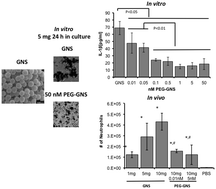
J. Mater. Chem. B, 2016,4, 1650-1659
https://doi.org/10.1039/C5TB01553G
Triamcinolone–carbon nanotube conjugation inhibits inflammation of human arthritis synovial fibroblasts
Repetitive intra-articular corticosteroid injections are inevitable for treating synovial inflammation in advanced arthritis.
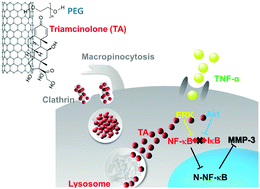
J. Mater. Chem. B, 2016,4, 1660-1671
https://doi.org/10.1039/C5TB01693B
A cell-based microarray to investigate combinatorial effects of microparticle-encapsulated adjuvants on dendritic cell activation
Experimental vaccine adjuvants are being designed to target specific toll-like receptors (TLRs) alone or in combination, expressed by antigen presenting cells, notably dendritic cells (DCs).
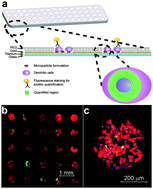
J. Mater. Chem. B, 2016,4, 1672-1685
https://doi.org/10.1039/C5TB01754H
About this collection
Although biomaterial scientists have been working at the interface of immunology, inflammation and materials for decades, recent advances in our understanding of how the immune system initiates, modulates and ameliorates almost every disease has opened up new directions in materials research that are targeted to immune-modulation. This themed issue focuses on a wide range of topics, including but not limited to the design or modification of biomaterials to control inflammation, modulate vaccine responses, deliver immunotherapeutics, enhance transplantation outcomes, augment regenerative potential and wound healing, and longitudinally detect immune-related biomarkers.
This themed issue was guest edited by Professor Krishnendu Roy, Georgia Institute of Technology, USA.